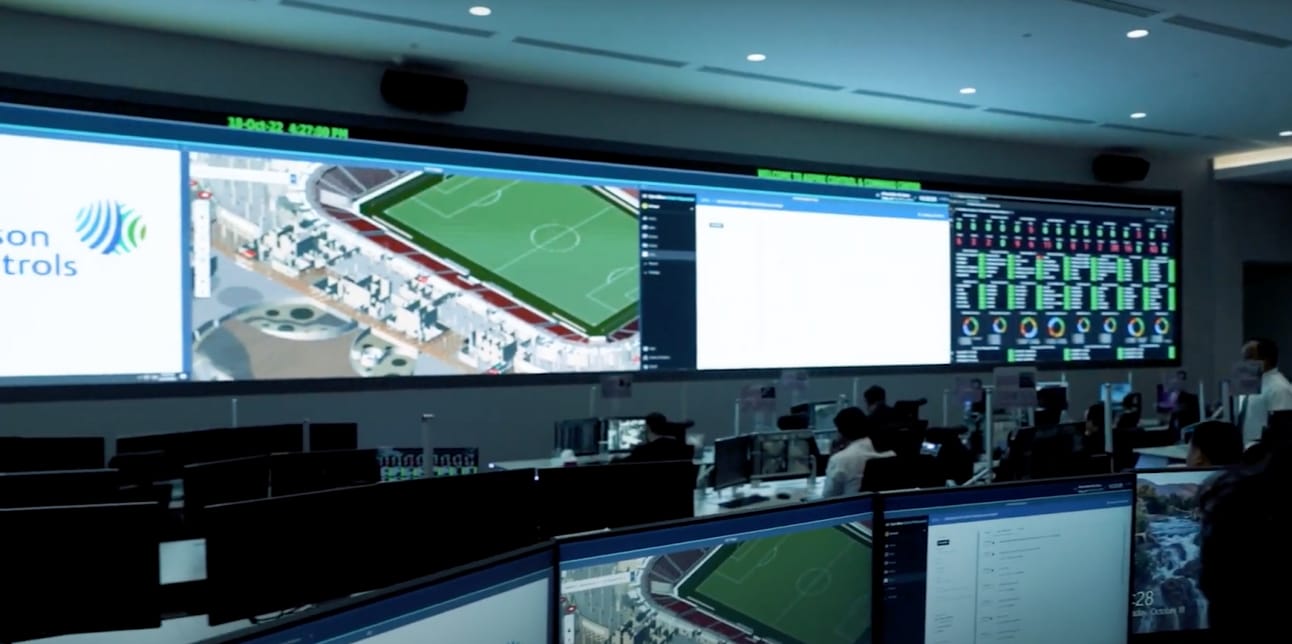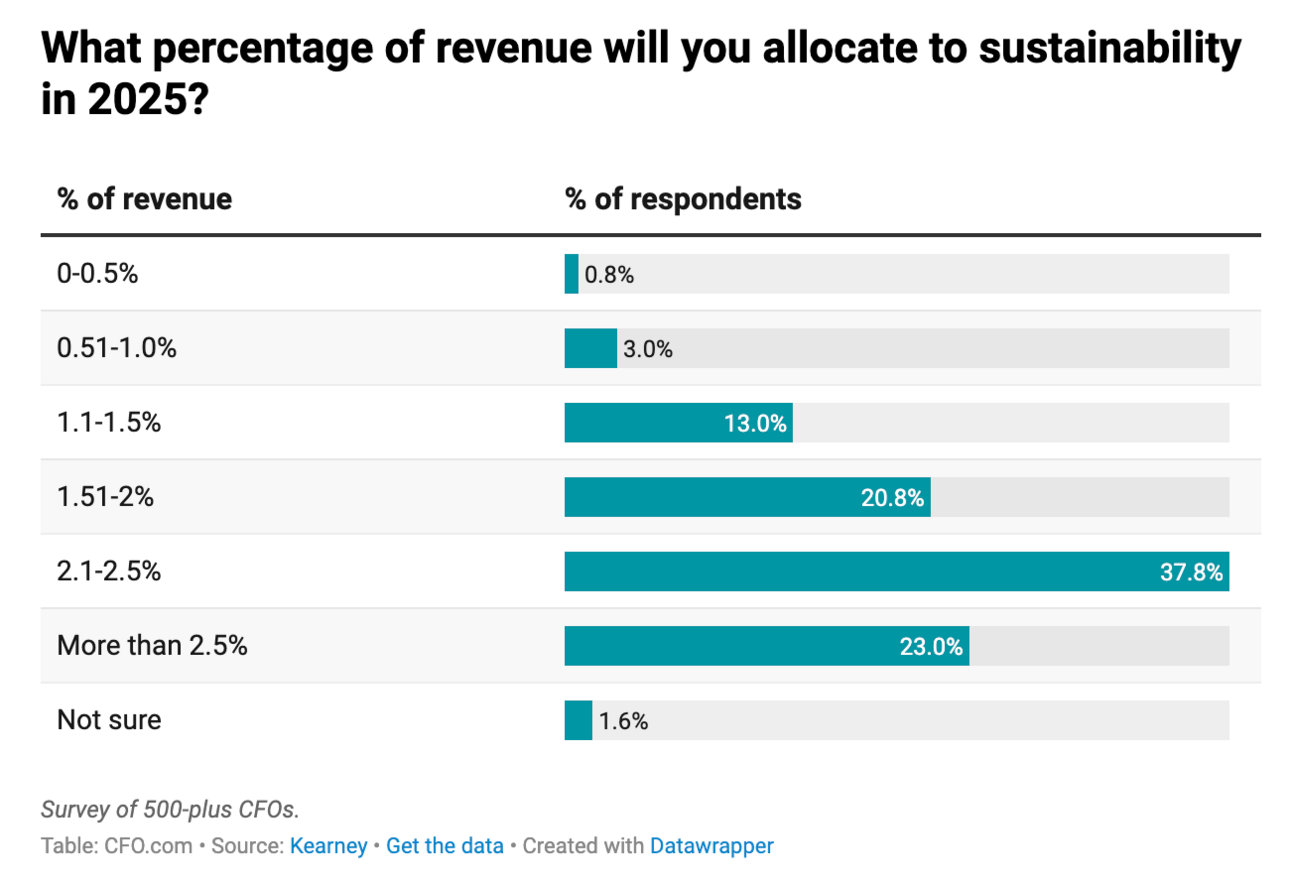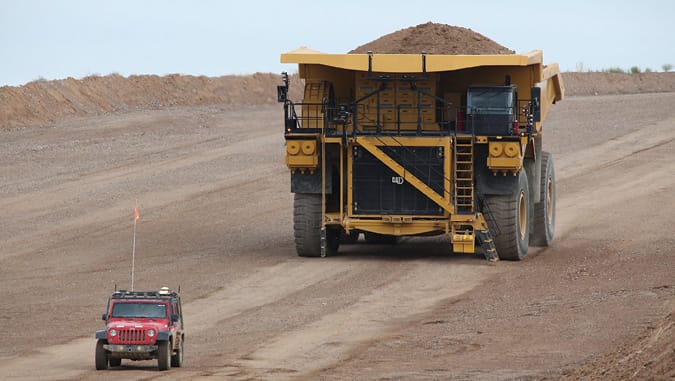- Supercool
- Posts
- 🌐 Old Giant, New Vision: Johnson Controls Puts Carbon Reduction on Autopilot
🌐 Old Giant, New Vision: Johnson Controls Puts Carbon Reduction on Autopilot
Johnson Controls is decarbonizing buildings at scale.
How Johnson Controls is using AI and customer trust to lead the low-carbon building revolution
Over the past few weeks, we’ve explored how AI is already powering real-world climate solutions deployed by fast-growing startups like BrainBox AI, Zum, and Budderfly.
But what happens when a 140-year-old company enters the innovation arms race—and immediately starts pulling ahead?
Johnson Controls has been pivotal in regulating indoor temperature since inventing the thermostat in 1883. In the early 1900s, the most advanced buildings in the world were installing them to deliver a new kind of comfort.
A case in point: the 47-story Singer Building in New York City. When it opened in 1908 as the tallest skyscraper in the world, it was also notable for housing 1,200 Johnson Controls thermostats.

The 47-story Singer Building in NYC contained 1,200 Johnson Controls thermostats.
The company’s chillers and HVAC systems helped shape the modern air conditioning industry through the 20th century. While Johnson Controls still does brisk business in HVAC and continues to advance the energy efficiency of its products, the company had the foresight—and the technical and managerial muscle—to see where the world was headed and move early.
In Wayne Gretzky's terms, Johnson Controls is skating to where the puck is going—reinventing itself as a digital powerhouse using its global footprint, trusted brand, and operational expertise to decarbonize buildings at scale.
At the center of this transformation is OpenBlue, Johnson Controls’ digital platform for commercial buildings now installed in airports, sports arenas, hospitals, and across cities and college campuses.
I was given a demo of the platform’s capabilities last month and immediately felt like I was staring at the future. It’s a single unified platform that delivers up to:
30% energy savings
20% lower maintenance costs
30% improved space utilization and workplace productivity
That’s good news for workers and the planet and great news for Chief Financial Officers. 92% of CFOs globally are increasing spending on sustainability this year, focusing on the precise solutions Johnson Controls now offers.

OpenBlue unified the central command of energy, safety, and operational management of all eight World Cup Stadiums in Doha in 2022.
OpenBlue is powerful, compelling technology—but the real story is about strategy and how Johnson Controls is turning its legacy of trust, scale, and infrastructure into momentum.
Responding to Market Needs Today and Tomorrow
One of the leaders bringing OpenBlue to market is Reuben Petty (who gave team Supercool the demo), a Principal Digital Sales Engineer. Reuben works directly with clients across all sectors. He explains what’s unique and appealing about the company’s approach:
“We can connect to any BAS [Building Automation System] system—Schneider, Siemens, Honeywell, doesn’t matter. We’re not asking you to buy new equipment. We’re trying to make it easier for the customer. A lot of other competitors, frankly, will say you need to rip everything out. That’s not how we’re going to get to net zero fast.”
The name OpenBlue was inspired by the fact that the platform works with all third-party systems. It connects to what’s in a building today and what will come tomorrow. It’s cloud-based, vendor-agnostic, and designed to adapt—whether or not a facility uses Johnson Controls’ equipment.
This flexibility makes it a go-to solution for customers with complex, legacy infrastructure. And it’s what gives Johnson Controls an edge against pure-play startups.
While startups battle for market share, Johnson Controls already has it. While they work to build credibility, Johnson Controls draws on decades of trust. That’s the quiet power of incumbency—when paired with a willingness to evolve.
How OpenBlue Thinks for Your Building
At the heart of OpenBlue is a generative AI system trained to make buildings more efficient. It doesn’t just show you data—it:
Detects faults in HVAC, lighting, and water systems
Calculates the financial impact of inefficiencies
Prioritizes repairs by cost or urgency
Automatically generates work orders
Learns from usage patterns to improve recommendations over time
In one instance, OpenBlue identified an air handler running in an unoccupied wing of a university building. It flagged the issue for its clients, recommended shutting it down, and helped the facility cut emissions and costs.
It’s like having a building whisperer on call 24/7.
Taking Clients From What They Have to The Future They Want
Rolling out OpenBlue isn’t just about tech. It’s about threading it into the realities of big, complex institutions—legacy systems, tight budgets, siloed teams.
That’s where Reuben’s team comes in. They don’t show up with prescribed actions—they show up with curiosity and the fluency to turn facility headaches into clean, scalable fixes.
At the University of Pennsylvania Health System, Reuben’s team came in to help track carbon emissions. But while reviewing operations, they noticed something else: nurses walking from room to room to manually log temperature, pressure, and humidity in operating rooms.
That wasn’t just inefficient. It was risky.
Reuben’s team solved both issues. They helped the hospital surface energy inefficiencies and automate compliance-critical monitoring.
Connecting existing sensors to OpenBlue, they pulled data into a single dashboard and streamlined the process. What was once hours of paperwork is now done in seconds—accurate, auditable, and compliance-ready.
Making Net Zero Actionable
OpenBlue helps customers track their carbon footprint, establish baselines, and report progress toward net-zero goals. It integrates renewable energy sources—like solar panel data—and automatically flows utility bills and emissions data into compliance-ready dashboards.
This matters in real terms. Universities use it to back up sustainability claims to students and donors. Hospitals use it to stay compliant and protect their brand. Public institutions use it to unlock new funding sources.
And with Johnson Controls’ support, many are layering in renewable energy, battery storage, and more—using OpenBlue as the control center that keeps it all connected.
Turning History into Advantage
Johnson Controls isn’t trying to disrupt the market from the outside. It’s leading from the inside.
It already works with thousands of facilities worldwide. It already knows how buildings run. And it’s made the strategic decision to bet on software—not just hardware—to carry its legacy into the future.
Choosing to be vendor-agnostic rather than proprietary.
Investing in real AI over marketing buzzwords.
Meeting customers where they are—not where a product roadmap wishes they were.
That’s what separates Johnson Controls from the competition. And it’s why they’re not just staying relevant—they’re setting the pace. OpenBlue is currently operational in 4,000 buildings.
If the future of climate tech goes to risk-taking innovators, then Johnson Controls is acting like a startup with 140 years of momentum.
The Takeaway
✅ Infrastructure, Trust, Relationships: Johnson Controls leverages its legacy to compete in new digital products.
✅ Open, Not Locked In: OpenBlue works with every competitor’s system now and in the future.
✅ AI That Delivers: Real-time insights that cut costs, emissions, and inefficiency.
✅ Moving Faster: Reuben Petty is turning field insights into a smarter, more powerful platform.
✅ De-Risked Climate Action: Customers aren’t just buying tech—they’re partnering with a trusted global leader on the path to net zero.
Listen to this podcast episode on Apple, Spotify, YouTube, and all other platforms.

↓
Number of the week: 62%

Chart from CFO.com
The percentage of CFOs globally planning to allocate at least 2.1% of revenues to sustainability in 2025. Additionally, 69% expect higher ROI from sustainability initiatives than traditional investments. See the full report from Kearney.
Our Take: While debates over ESG capture the headlines, C-Suite leaders recognize sustainability initiatives for what they’ve become—smart business investments.
Quote of the week:
“We used to think of ourselves as kind of a startup sitting in an old utility. Now it’s much more the bread and butter for us and the company.”
- Ross Millikan, Manager of Dominion Energy’s Renewable Operations
Dominion expects to double energy generation over the next 15 years to 56 gigawatts, of which nearly half will come from solar to run data centers in northern Virginia (as reported today in the Wall Street Journal).
↓
In 2020, just months before co-founding Plantd, a carbon-negative building materials manufacturer, I had a conversation with the Dean of the Pratt Engineering School at Duke University. We discussed launching a new interdisciplinary program to give students hands-on experience creating climate tech solutions.
The Dean was excited about AI’s potential to tackle climate challenges. I was skeptical.
Back then—and still today—I believed the key to solving the climate crisis lay in decarbonizing physical infrastructure. AI didn’t seem like the answer.
Fast forward eight months and 35 newsletters into Supercool, and my perspective has shifted. Connecting with innovators using AI to decarbonize various industries has made me rethink my views. Today, I see AI as integral to the mission.
As with Johnson Controls, when global companies embrace AI to drive decarbonization, their scale immediately makes their initiatives notable.
Here are three more global brands harnessing AI to cut carbon, boost the bottom line, and optimize performance.

An enormous caterpillar mining truck.
Caterpillar: AI Eats Diesel
Caterpillar’s massive mining trucks run smart and cleaner thanks to AI. The company’s autonomous hauling system uses artificial intelligence to plan ultra-efficient routes, reduce idle time, and optimize every movement across massive mine sites. The result? Up to 10% better fuel efficiency and near-continuous utilization, cutting diesel use and emissions in operations that run 24/7.

Dove products manufactured in India by Unilever—with up to 21% less virgin plastic.
Unilever: AI Unwraps Sustainable Packaging
Unilever’s packaging gets leaner with AI. The consumer giant uses artificial intelligence and digital twin simulations at its factory in India to rapidly test and refine sustainable packaging solutions, cutting virgin plastic usage by up to 21%.

Apple’s Daisy Robot
Apple: AI Takes a Bite Out of Waste
Apple’s recycling robots, powered by artificial intelligence, make reclaiming materials more effective and precise. Daisy, the tech giant’s AI-driven recycling bot, disassembles old iPhones, efficiently recovering precious metals like tungsten, tin, and rare earth elements. This AI-powered precision reduces reliance on new mining, cuts emissions, and fuels Apple's push toward carbon neutrality.
"We would not be able to recover the level of material that we do today for recycling without AI. I mean, it is already fundamental in our calculations."
- Tim Cook, CEO of Apple
↓